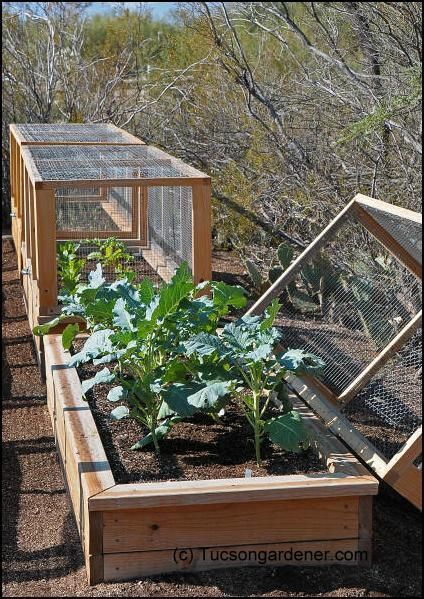Cover crops play a vital role in maintaining the health and productivity of vegetable gardens. When carefully selected and properly managed, cover crops can provide numerous benefits such as enhancing soil fertility, suppressing weeds, preventing erosion, and attracting beneficial insects. In this article, we will explore the importance of cover crops in vegetable gardens, the factors to consider when choosing them, the best seasonal cover crops to use, and valuable tips for successful planting and maintenance.
When it comes to selecting good cover crops for vegetable gardens, there are several important factors to consider. Not all cover crops are created equal, and different varieties may provide unique benefits depending on the specific needs of your garden.
Whether you are looking to improve soil structure, add organic matter to the soil, or suppress weed growth, choosing the right cover crop is essential for achieving your desired results. In this article, we will delve into some of the top recommended cover crops for vegetable gardens based on their individual advantages and suitability for different growing conditions.
Additionally, we will discuss how to effectively plant and maintain cover crops in your vegetable garden throughout the year. Understanding when and how to sow these crops is crucial for maximizing their benefits and ensuring that they do not compete with your main vegetable plants. By following the expert advice provided here, you can learn how to integrate cover crops seamlessly into your gardening routine while avoiding common mistakes that may hinder their potential impact on your overall garden health.
Benefits of Using Cover Crops in Vegetable Gardens
Cover crops play a crucial role in maintaining the health and fertility of soil in vegetable gardens. There are several benefits to using cover crops, making them an essential part of any gardening strategy.
One of the main advantages is that cover crops help to prevent soil erosion by keeping the soil in place and protecting it from the impact of heavy rain or strong winds. Additionally, they can improve soil structure by adding organic matter and increasing microbial activity, which ultimately enhances nutrient availability for the vegetables being grown.
Another key benefit of using cover crops is their ability to suppress weeds. By planting dense cover crops, such as clover or rye, you can effectively smother unwanted weeds and reduce the need for manual weeding or chemical weed control methods. This not only saves time and effort but also promotes a healthier garden environment by minimizing the competition for nutrients and water between weeds and vegetable plants.
Furthermore, cover crops offer a natural way to control pests and diseases in vegetable gardens. Certain cover crops have biofumigant properties that help to reduce harmful organisms in the soil, providing a form of natural pest management.
In addition, the presence of cover crops can attract beneficial insects that contribute to pollination and pest control, creating a more balanced ecosystem within the garden. Overall, these benefits make it clear why using good cover crops for vegetable gardens is an important practice for sustainable and successful gardening.
Factors to Consider When Choosing Cover Crops for Vegetable Gardens
When choosing cover crops for your vegetable garden, it is important to consider several factors to ensure the success of your garden. One of the main considerations is the climate and growing conditions in your area. Different cover crops thrive in different climates, so it’s essential to choose cover crops that are well-suited to your specific region.
Another factor to consider is the specific needs of your vegetable plants. Some cover crops work well with certain types of vegetables, providing complementary benefits such as nitrogen fixation or weed suppression. It’s important to select cover crops that will enhance the health and productivity of your vegetable garden.
Additionally, timing is crucial when choosing cover crops for vegetable gardens. Depending on when you plan to plant your vegetables, you’ll need to select cover crops that can be easily incorporated into the soil at the appropriate time. For example, if you’re planning a fall or winter harvest, cold-hardy cover crops like rye or clover may be ideal.
Choosing the right cover crops for your vegetable garden can greatly impact its overall health and productivity. By considering climate, plant needs, and timing, you can select cover crops that will effectively improve soil fertility, suppress weeds, and prevent erosion while also benefiting your vegetables.
| Factor | Consideration |
|---|---|
| Climate | Choose cover crops suited to local climate |
| Vegetable Plants | Select cover crops that work well with specific vegetables |
| Timing | Choose cover crops that align with planting and harvesting schedule |
Seasonal Cover Crops for Vegetable Gardens
When it comes to choosing the right cover crops for your vegetable garden, considering seasonal variations is crucial. Different cover crops thrive in different seasons, and selecting the appropriate ones can greatly benefit your garden’s soil health and overall productivity.
In the spring, consider planting legume cover crops such as hairy vetch or crimson clover. These nitrogen-fixing plants help improve soil fertility, which is beneficial for the subsequent vegetable crops. Additionally, they provide excellent weed suppression and erosion control.
For summer cover crops, buckwheat and cowpeas are excellent choices. Buckwheat grows rapidly and produces abundant biomass, effectively smothering weeds. Cowpeas, on the other hand, are known for their heat tolerance and ability to withstand dry conditions, making them ideal for hot summer months.
As fall approaches, consider planting rye or winter wheat as cover crops. These plants establish quickly and protect the soil during the winter months. They also help prevent erosion and add organic matter to the soil as they decompose.
Lastly, for winter cover crops, consider using a mix of winter rye and hairy vetch. This combination provides excellent soil coverage throughout the colder months while also enriching the soil with nutrients.
By carefully selecting seasonal cover crops for your vegetable garden, you can ensure year-round soil health and improve the overall vitality of your garden beds. Remember to also rotate your vegetable crops with these cover crops to maximize their benefits in maintaining a healthy garden ecosystem.
Top 5 Recommended Cover Crops for Vegetable Gardens
When it comes to choosing good cover crops for vegetable gardens, there are several options that can provide numerous benefits to your garden. Cover crops play a vital role in promoting soil health, weed suppression, pest control, and nutrient retention. By incorporating the right cover crops into your vegetable garden, you can improve overall crop yields and maintain a healthy growing environment.
Here are the top 5 recommended cover crops for vegetable gardens:
- Winter Rye: Winter rye is an excellent choice for fall planting as it grows quickly and provides effective weed suppression. It also helps in preventing soil erosion during the winter months.
- Clover: Clover is a popular choice for fixing nitrogen in the soil, which is beneficial for high-demanding vegetable crops. It also attracts pollinators and beneficial insects to the garden.
- Hairy Vetch: Hairy vetch is known for its ability to add organic matter to the soil and fix nitrogen. It thrives in cooler temperatures, making it suitable for early spring or late fall planting.
- Buckwheat: Buckwheat is a fast-growing cover crop that excels at suppressing weeds and attracting pollinators. It also helps in breaking up compacted soil and improving soil structure.
- Annual Ryegrass: Annual ryegrass is an excellent option for adding biomass to the soil and controlling erosion. It also helps in enhancing nutrient cycling in the garden.
With these good cover crops for vegetable gardens, you can enhance the overall health of your garden while providing essential benefits to your vegetables. Consider the specific needs of your garden and choose cover crops that align with those requirements to maximize their effectiveness.
Planting and maintaining cover crops in vegetable gardens require careful consideration of timing, seeding rates, and proper management practices. By following recommended guidelines for each cover crop variety, you can ensure successful establishment and optimal performance in your vegetable garden.
How to Plant and Maintain Cover Crops in Vegetable Gardens
Planting and maintaining cover crops in vegetable gardens is a great way to improve soil health, prevent erosion, and suppress weeds. With proper care and attention, these crops can provide numerous benefits for your garden. Here are some key steps to consider when planting and maintaining cover crops in your vegetable garden.
Choosing the Right Cover Crops
When selecting cover crops for your vegetable garden, it’s important to consider factors such as climate, soil type, and specific needs of your garden. For example, legumes like clover and vetch are great for fixing nitrogen into the soil, while grasses like rye and barley can help with weed suppression. It’s also important to choose cover crops that will complement the growth of your vegetables rather than compete with them for nutrients.
Planting Techniques
Proper planting techniques are essential for the success of cover crops in vegetable gardens. Before planting, make sure to prepare the soil by removing any debris or weeds. Then, sow the seeds at the recommended depth and spacing according to the specific requirements of each cover crop. Water the area thoroughly after planting to ensure good seed-to-soil contact.
Maintenance Practices
Once your cover crops have been planted, it’s important to maintain them properly throughout their growth cycle. This may include regular watering, especially during dry periods, as well as monitoring for pests or diseases that could affect the cover crop’s health. In addition, some cover crops may need periodic mowing or trimming to prevent them from becoming too tall and interfering with the growth of your vegetables.
By following these guidelines for planting and maintaining cover crops in your vegetable garden, you can maximize their potential benefits and contribute to the overall health of your garden soil.
Tips for Maximizing the Benefits of Cover Crops in Vegetable Gardens
Rotate Cover Crops to Improve Soil Health
One of the key ways to maximize the benefits of cover crops in vegetable gardens is to rotate different types of cover crops throughout the year. This practice not only prevents the depletion of specific nutrients in the soil, but it also helps in improving overall soil health.
For example, leguminous cover crops such as clover or vetch can fix nitrogen in the soil, while grassy cover crops like rye or oats can help with weed suppression and adding organic matter to the soil. By rotating these different types of cover crops, you can ensure that your vegetable garden’s soil remains fertile and well-balanced.
Utilize Cover Crops for Pest Management
In addition to improving soil health, cover crops can also play a significant role in managing pests in your vegetable garden. Certain cover crops such as marigold or mustard have natural properties that repel harmful pests like nematodes or other soil-borne diseases.
By strategically planting these pest-repelling cover crops alongside your vegetables, you can create a natural barrier against potential threats to your garden. This method not only reduces the need for synthetic pesticides but also promotes a healthier and more sustainable ecosystem within your vegetable garden.
Implement No-Till Farming Practices
To truly maximize the benefits of cover crops in vegetable gardens, consider implementing no-till farming practices. Instead of disturbing the soil through traditional tilling methods, leaving cover crops intact and allowing them to decompose naturally can improve soil structure and reduce erosion.
The roots of cover crops also help improve water infiltration and retention, which is crucial for maintaining moisture levels in your vegetable garden. Embracing no-till farming along with utilizing cover crops will result in healthier and more resilient soil for your vegetables to thrive.
Common Mistakes to Avoid When Using Cover Crops in Vegetable Gardens
Planting the wrong cover crops in your vegetable garden can lead to a variety of problems, so it’s important to make informed decisions when choosing which cover crops to use. One common mistake to avoid is planting cover crops that are not compatible with the specific needs of your vegetable garden. Some cover crops may compete with your vegetables for nutrients or water, while others may attract pests or diseases that could harm your garden.
Another mistake to avoid is neglecting to properly manage your cover crops. If left unchecked, some cover crops can become invasive and take over your vegetable garden, making it difficult for your vegetables to thrive. It’s important to regularly monitor and maintain your cover crops by mowing, tilling, or pulling them up at the right time.
Finally, a common mistake when using cover crops in vegetable gardens is ignoring the timing of planting and termination. Planting cover crops too late or too early in the season can result in limited growth and effectiveness. Additionally, failing to terminate cover crops at the right stage can lead to competition for resources and even hinder the growth of your vegetables.
| Common Mistake | Impact |
|---|---|
| Planting incompatible cover crops | Competition for nutrients and water |
| Neglecting proper management | Invasive growth and difficulty for vegetable plants |
| Ignoring planting and termination timing | Limited growth and competition for resources with vegetables |
Conclusion and Final Thoughts on the Importance of Cover Crops in Vegetable Gardens
In conclusion, cover crops play a crucial role in maintaining the health and fertility of vegetable gardens. By incorporating the right cover crops, gardeners can experience numerous benefits such as improved soil structure, reduced erosion, weed suppression, and increased nutrient availability. When choosing cover crops for your vegetable garden, it’s important to consider factors such as climate, soil type, and the specific needs of your garden.
Seasonal cover crops offer versatility and can be tailored to meet the unique requirements of different stages in the growth cycle of vegetable crops. Some good cover crops for vegetable gardens include nitrogen-fixing legumes like clover and vetch, as well as nutrient-accumulating plants like rye and oats. These cover crops not only improve soil health but also help control pests and diseases.
Frequently Asked Questions
What Is the Best Cover Crop for a Vegetable Garden?
The best cover crop for a vegetable garden depends on the specific needs of the soil and the vegetables being grown. Some commonly used cover crops include clover, rye, and vetch. These can help with weed suppression, soil fertility, and erosion control.
Can You Plant Cover Crops With Vegetables?
Yes, you can plant cover crops with vegetables. In fact, planting cover crops alongside vegetables can have several benefits. Cover crops can help improve soil health, reduce erosion, suppress weeds, and provide habitat for beneficial insects.
What Is the Best Cover Crop for Tomatoes?
The best cover crop for tomatoes is one that helps improve soil fertility and structure while also suppressing weeds. Legumes like hairy vetch or crimson clover are good choices as they can fix nitrogen in the soil which is beneficial for tomato plants’ growth and development.

If you’re looking to get into vegetable gardening, or are just looking for some tips on how to make your current garden better, then you’ve come to the right place! My name is Ethel and I have been gardening for years. In this blog, I’m going to share with you some of my best tips on how to create a successful vegetable garden.





